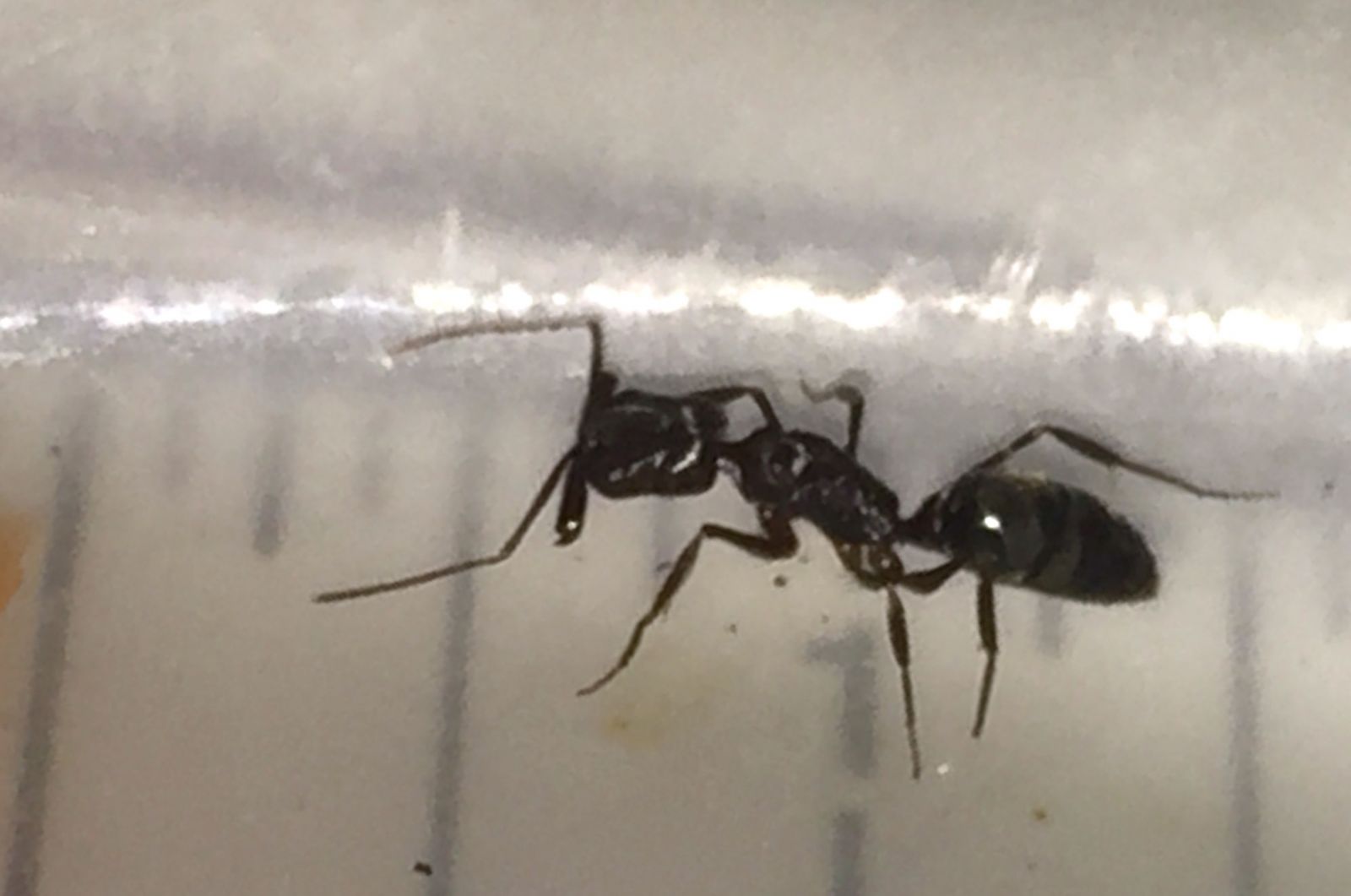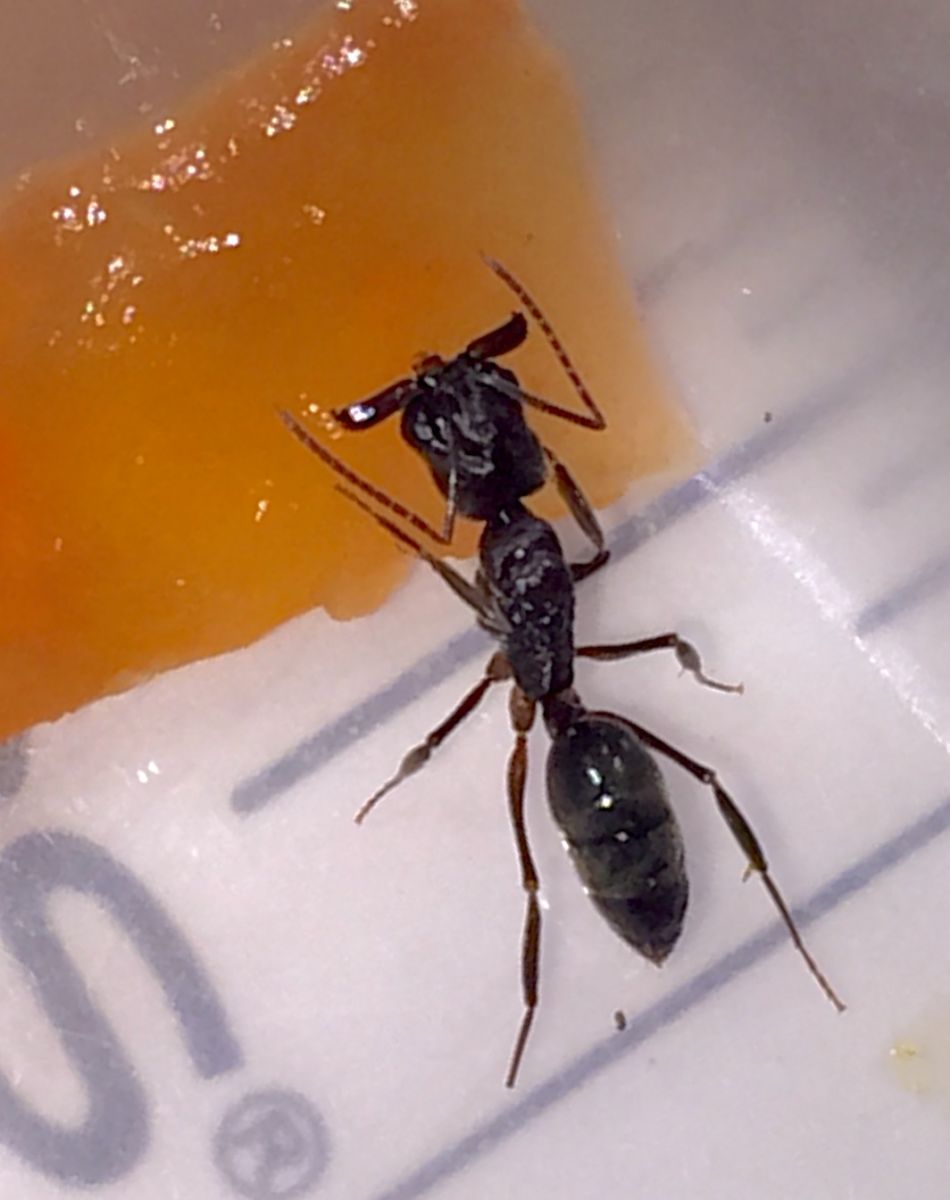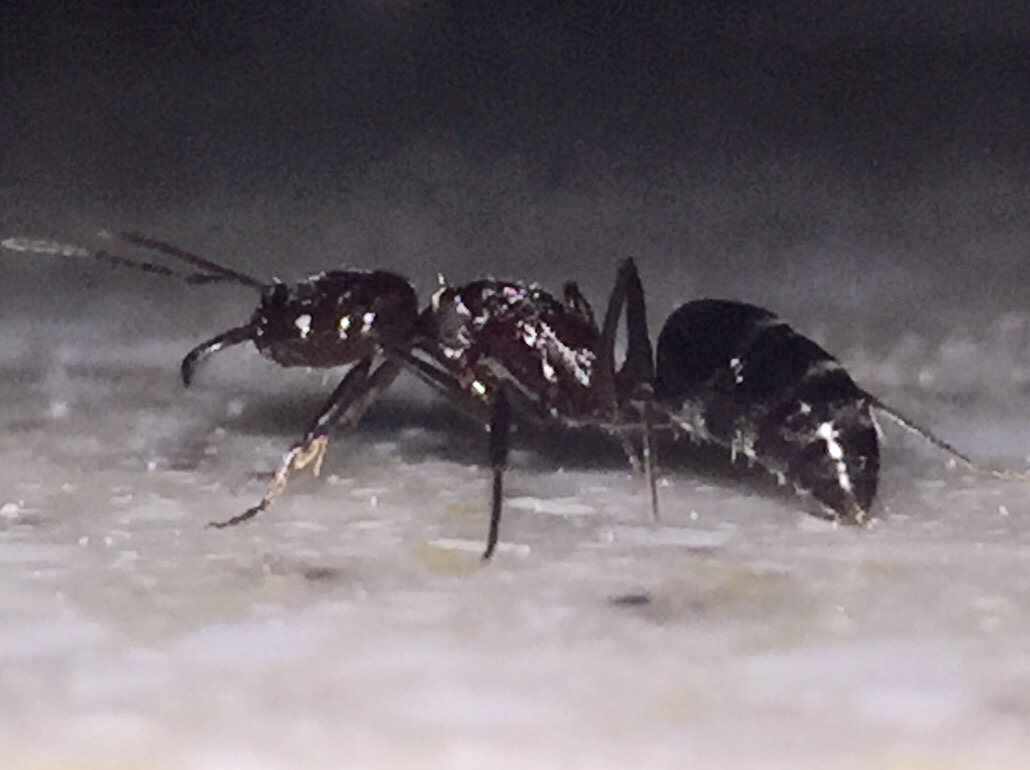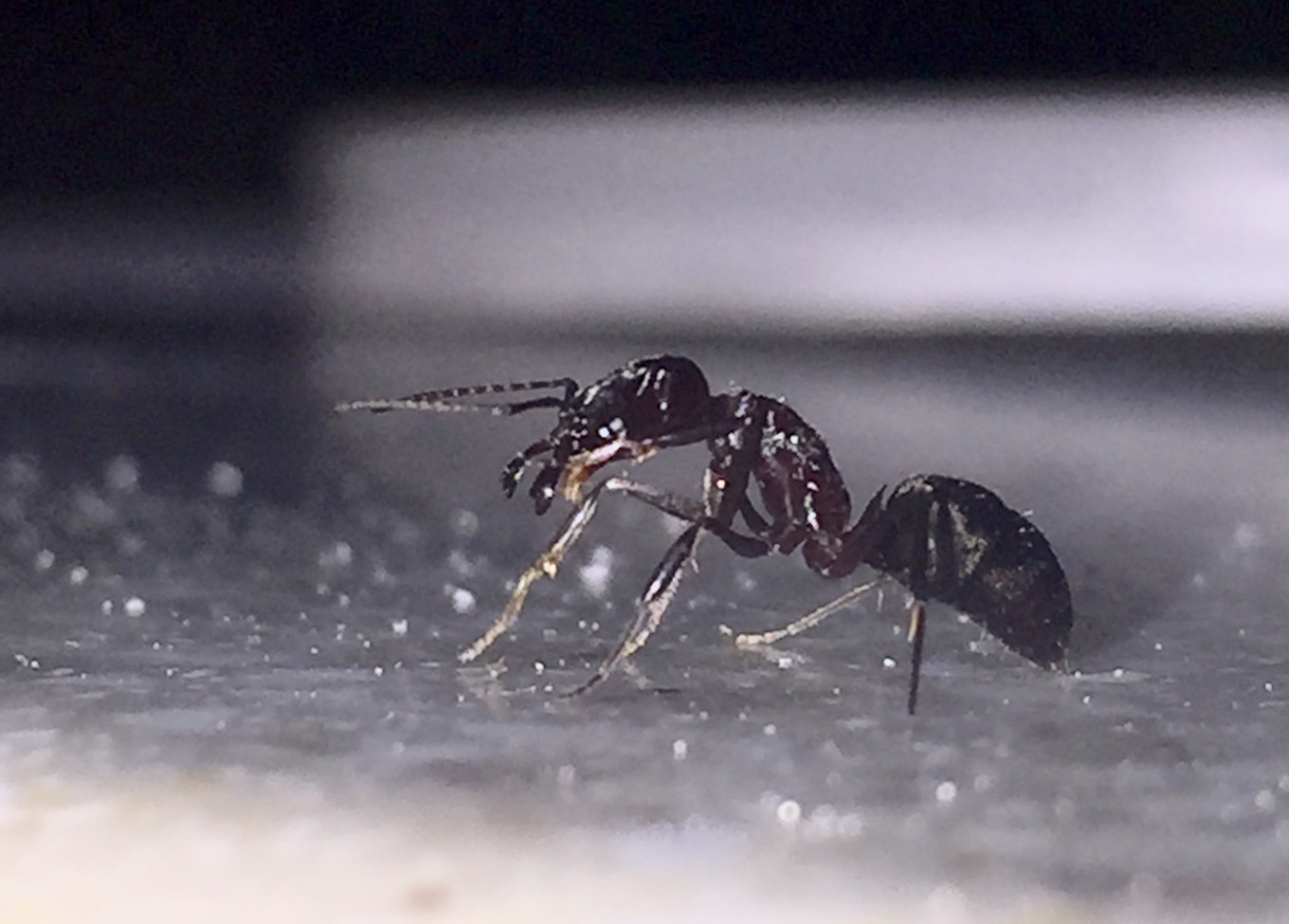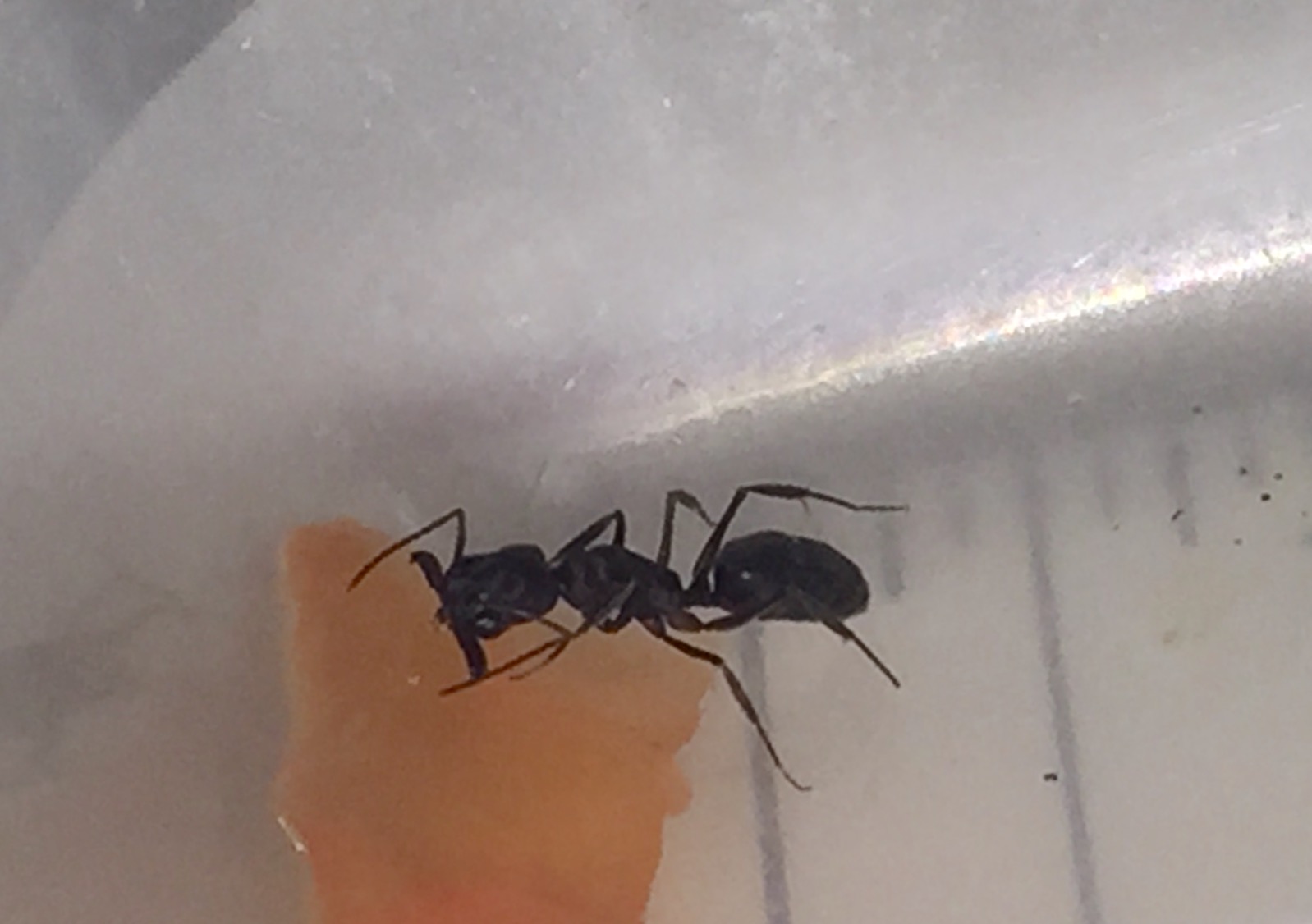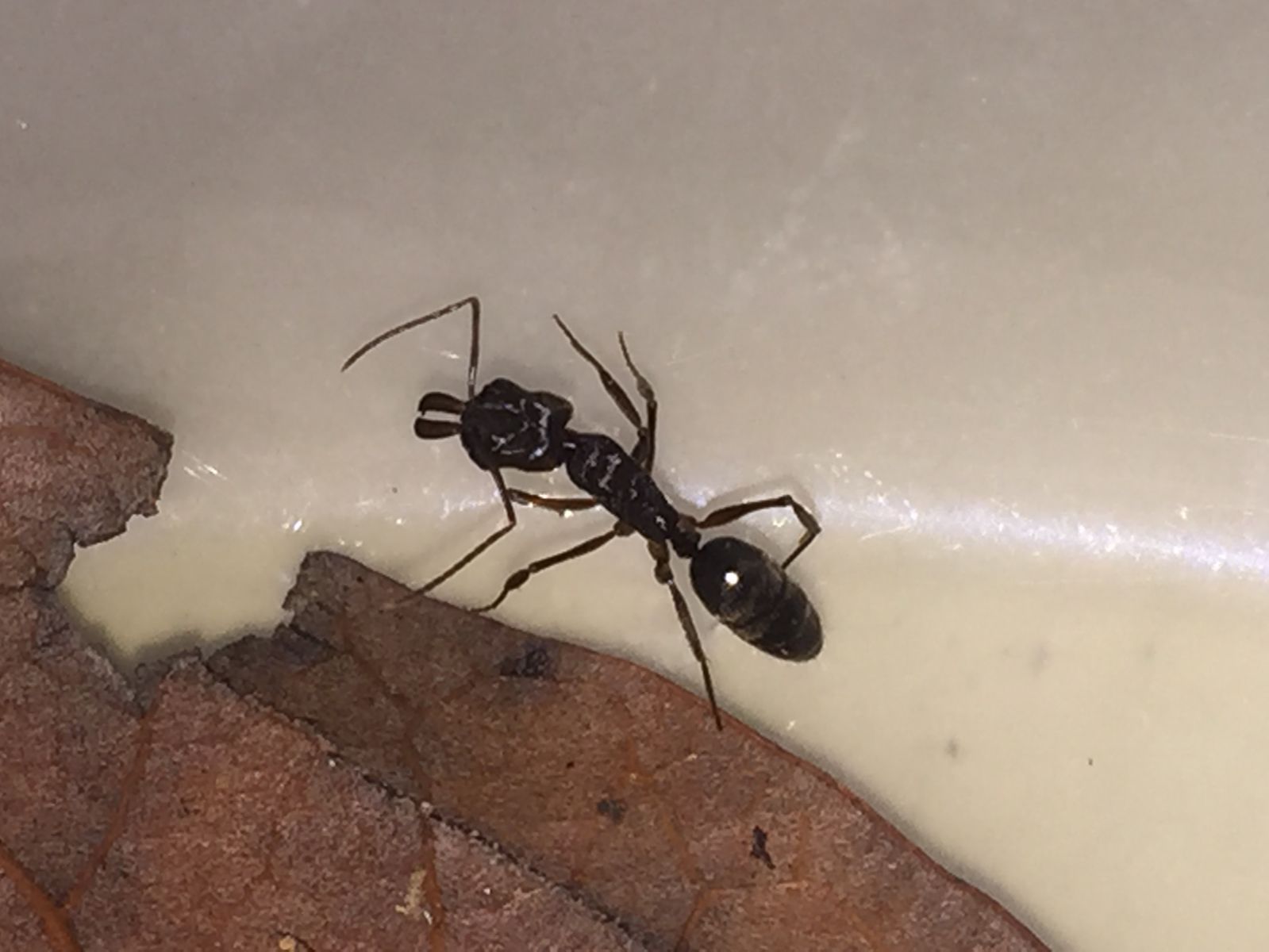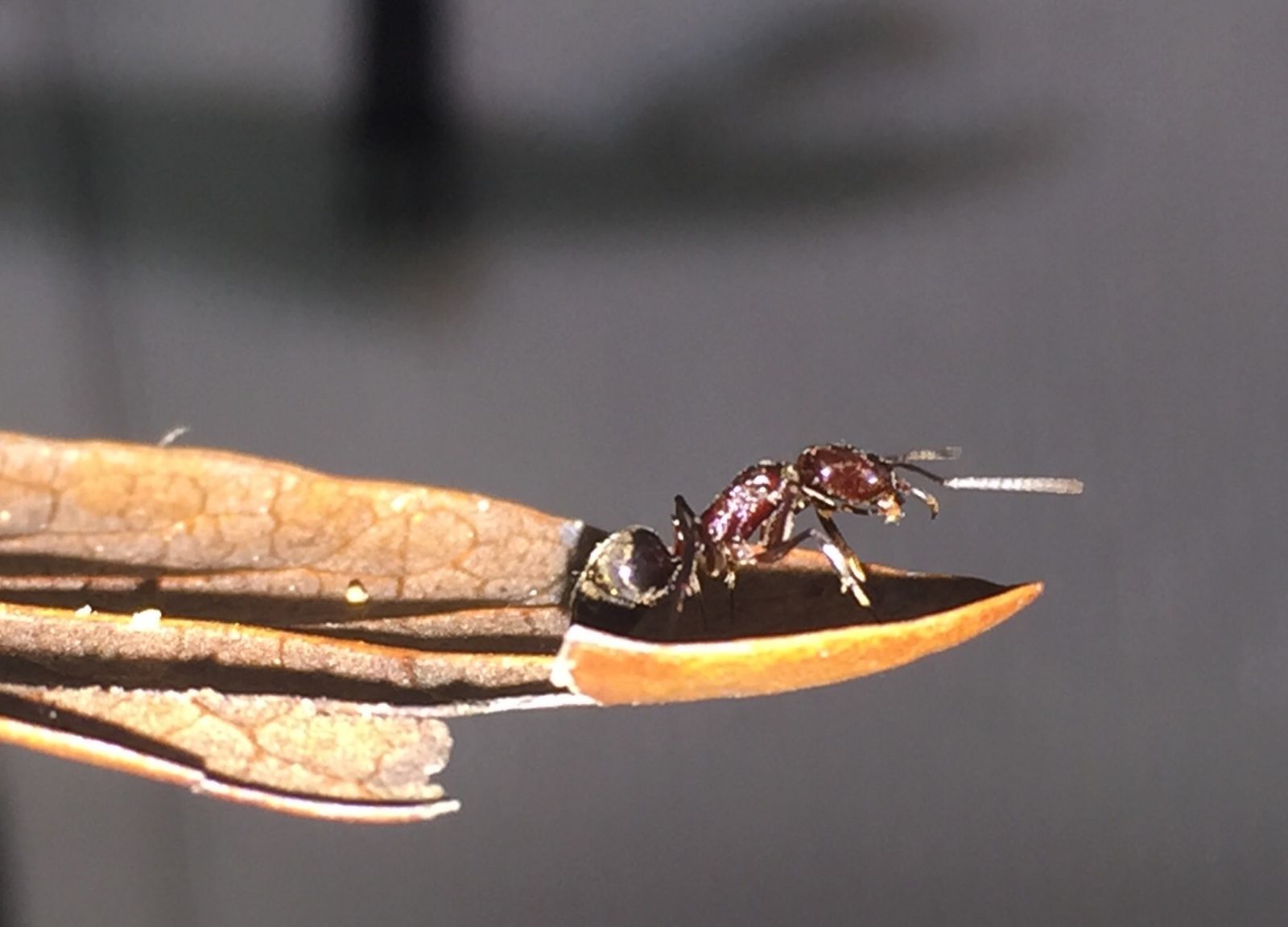Please give your opinion if this is a queen Odontomachus.
Central Florida.
Collected 8-14 on the rear patio. Lots of trap jaw colonies around the yard and woods. Moving very slowly and deliberately, even after blocking it's path.
7/16" long.
Black.
Large thorax. Much larger than any of the other ones we have seen or collected.
I Phone pics:
